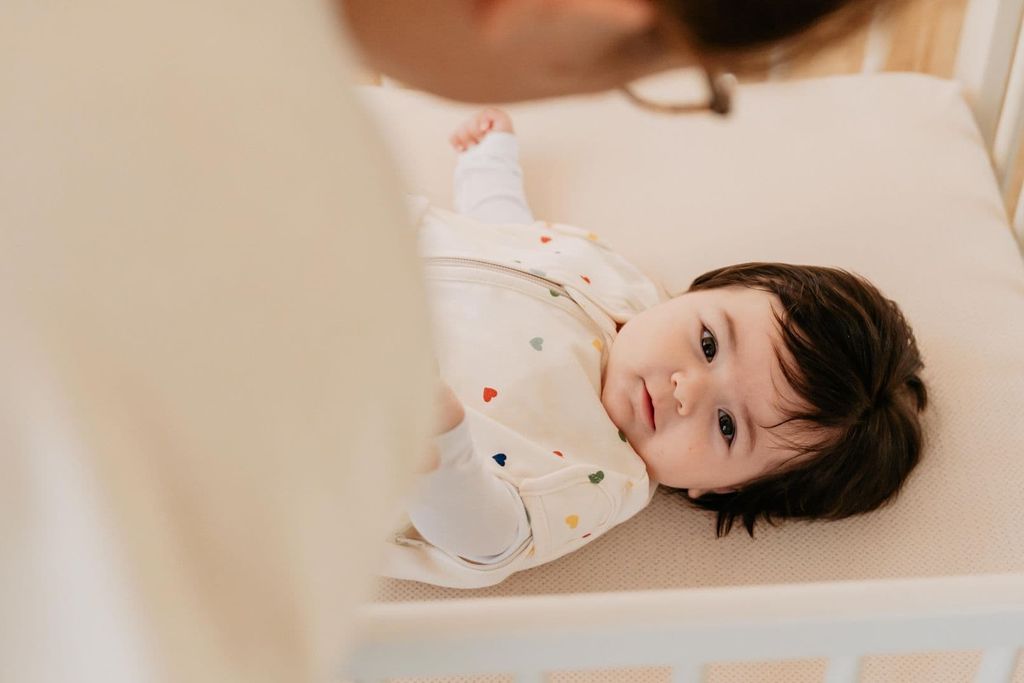Your baby can learn how to sleep independently
Every parent knows the feeling—restless nights, a baby who keeps waking up, and the longing for a good night's sleep. Luckily, there’s good news! Your little one can learn to fall asleep independently and soothe themselves back to sleep when they wake up at night. Not only will this lead to peaceful nights for you, but also for your baby. How? Keep reading!

Active and quiet sleep phases: What happens while your baby sleeps
Your baby goes through different sleep phases. The sleep cycle consists of two main phases: the active and quiet sleep phases. The first phase (active sleep) lasts about 10-30 minutes. During this stage, your baby sleeps lightly, moves around, and is more sensitive to external stimuli. This means that if there’s too much happening around them, they may wake up easily. A calm environment is crucial during this phase!
The quiet sleep phase is when your baby is in deep sleep—completely still and fully relaxed. But this phase doesn’t last all night! After about 30 minutes, the cycle starts again, and your baby becomes more active and more sensitive to stimuli. Being able to fall back asleep independently is essential, and you can help your little one learn this step by step.

Timing is everything: How wake windows can help
If you want to teach your baby to sleep independently, tracking wake windows is key. Wake windows are the periods your baby is awake, and they gradually get longer as your baby grows. Watch for sleep cues like yawning, looking away, or rubbing their eyes—these signals mean it’s time to start the bedtime routine!
By following the correct wake windows, you help prevent overtiredness and make falling asleep much easier for your baby.
Sleep Associations: creating a calming bedtime ritual
Your baby will learn to sleep independently faster if they develop positive sleep associations—habits, environments, and routines that signal it’s time to sleep. Here are some simple yet effective ways to help:
Swaddle or Sleeping Bag – Gives your baby a sense of security, just like in the womb.
Calm Sleep Environment – A darkened room and a peaceful atmosphere help babies sleep. Using white noise or soft music can also be beneficial.
Consistency – A predictable bedtime routine (such as a warm bath, feeding, and a bedtime story) helps your baby recognize when it's time to sleep.
Independence – Encourage your baby to fall asleep without relying on rocking, feeding, or your presence.

How to help your baby sleep independently at night
Even when your baby is asleep, they will wake up briefly due to natural sleep cycles. Instead of rushing to their side, give them a moment to self-soothe. It might take some time, but with patience and consistent sleep habits, your baby will learn to settle back to sleep on their own.
Conclusion: Patience is key to independent sleep
Learning to sleep independently is a process of trial and error. It takes time, but with the right approach and patience, your baby will master it. Start by adjusting wake windows, create positive sleep associations, and make sure your baby feels safe and comfortable in their own bed. A calm sleep environment, a reassuring bedtime routine, and trust in your little one will ultimately lead to better sleep for everyone.
With these tips, you’re well on your way. Enjoy the small steps toward independent sleep and the well-deserved rest for both your baby and yourself!


